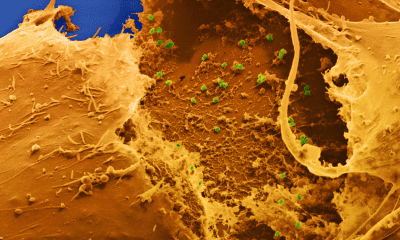Follow Us @
Diastasis after pregnancy: what can you do?
– Pregnancy tips, how to remain healthy, health and wellbeing, latest symptoms and treatments.
Diastasis after pregnancy: what can you do?
During pregnancy, your abdomen expands considerably. This stretches the tendon plate between the two halves of the rectus abdominis muscle. This can cause a diastasis or 'pregnancy belly', a space between your rectus abdominis muscles. About 3 out of 10 women who are pregnant for the first time have a slight diastasis. As a woman has had more children, her chance of a diastasis also increases.
What is a diastasis?


© Getty Images
How does a diastasis develop?
With prolonged stretching or excessive exertion, the connective tissue of the tendon plate can deform or tear. In that case, it does not recover to its original state. The halves of the rectus abdominis muscle continue to deviate slightly. Then we speak of a (rectus) diastasis.
You can check yourself if you have a diastasis. Lie on your back on the floor, legs pulled up, arms along your body. Lift your head towards your knees. The elongated bump that appears on your belly is the diastasis.
Also read: No more sex drive since giving birth? Sexologist Vanessa offers advice
Risk factors for diastasis
The development of a diastasis is promoted by, among other things:
- a large weight gain during pregnancy
- a big baby
- a twin pregnancy
- weak or too strong abdominal muscles, or weak supporting tissue
- a previous birth
- after a caesarean section
Also read: Everything about tearing during childbirth
Implications
A diastasis usually disappears spontaneously during the first six months after pregnancy. Usually you will not experience much discomfort from it. Possible complaints that can occur are:
- postural problems
- problems with bending the trunk (when dressing, turning in bed, etc.)
- Back pain can occur due to compensation of the slack abdominal muscles
- constipation or difficulty with bowel movements (you have difficulty pushing)
- the persistent swelling of the skin makes it appear as if you are still pregnant
Also read: Importance of the pelvic floor: 'Half of pregnant women suffer from urinary incontinence'
Also read: Exercises to strengthen your pelvic floor
Treatment and surgery
What can you do yourself?
The first 6 weeks after giving birth, you should definitely not do any straight abdominal exercises because of the diastasis. Only exercise the oblique abdominal muscles, but always in combination with the pelvic floor. It is recommended to get out of bed by first rolling onto your side and then pushing yourself up with your arms until you are sitting on the mattress. This way, the straight abdominal muscles are not pushed further apart.
What can your doctor do?
If the diastasis does not disappear by itself or if it causes you a lot of discomfort or is aesthetically disturbing, then a surgical procedure is possible. Correction of a pregnancy belly consists of removing the excess skin via an abdominal wall correction (abdominoplasty) and a correction of the diastasis with sutures by the plastic surgeon. If the diastasis is more than 4 cm or if there is an umbilical hernia, a reinforcement of the abdominal wall will be performed during the procedure by placing a net between the various abdominal muscles. If there is no pronounced excess skin, then an abdominal wall correction is not necessary and the diastasis can be repaired via a laparoscopic operation.
Diastasis after pregnancy: what can you do?
Follow AFRILATEST on Google News and receive alerts for the main news about celebrities, soap operas, series, entertainment and more! Diastasis after pregnancy: what can you do?
SHARE POST AND EARN REWARDS:
Join our Audience reward campaign and make money reading articles, shares, likes and comment >> Join reward Program
FIRST TIME REACTIONS:
Diastasis after pregnancy: what can you do?
, click allow to follow this topic and get firsthand daily updates. please don’t be shy be the first to leave us a comment in the comment section. best pregnancy articles and all about fertility diets.
JOIN US ON OUR SOCIAL MEDIA: << FACEBOOK >> | << WHATSAPP >> | << TELEGRAM >> | << TWITTER >
Diastasis after pregnancy: what can you do?
#Diastasis #pregnancy



 Online Earning2 months ago
Online Earning2 months agoSee the details about the fall of Bitcoins



 Trending Game3 months ago
Trending Game3 months agoDying Light 2 – 7 tips to do well in the zombie adventure



 USA today entertainment3 months ago
USA today entertainment3 months agoBLACKPINK's Lisa creates history with solo single



 Fashion3 months ago
Fashion3 months agoLearn different ways to use scarves; new bet for the summer of 2024



 Culture2 months ago
Culture2 months agoDiscover the Nike Run SP routes



 Trending Game3 months ago
Trending Game3 months agoDRAGON BALL Sparkling! ZERO rips through the skies on October 11th



 Trending Game3 months ago
Trending Game3 months agoSeason of the Reptile Arrives in Mortal Kombat 1 with Trailer



 Trending Game3 months ago
Trending Game3 months agoSonic and Friends appear in Super Monkey Ball Banana Rumble





























